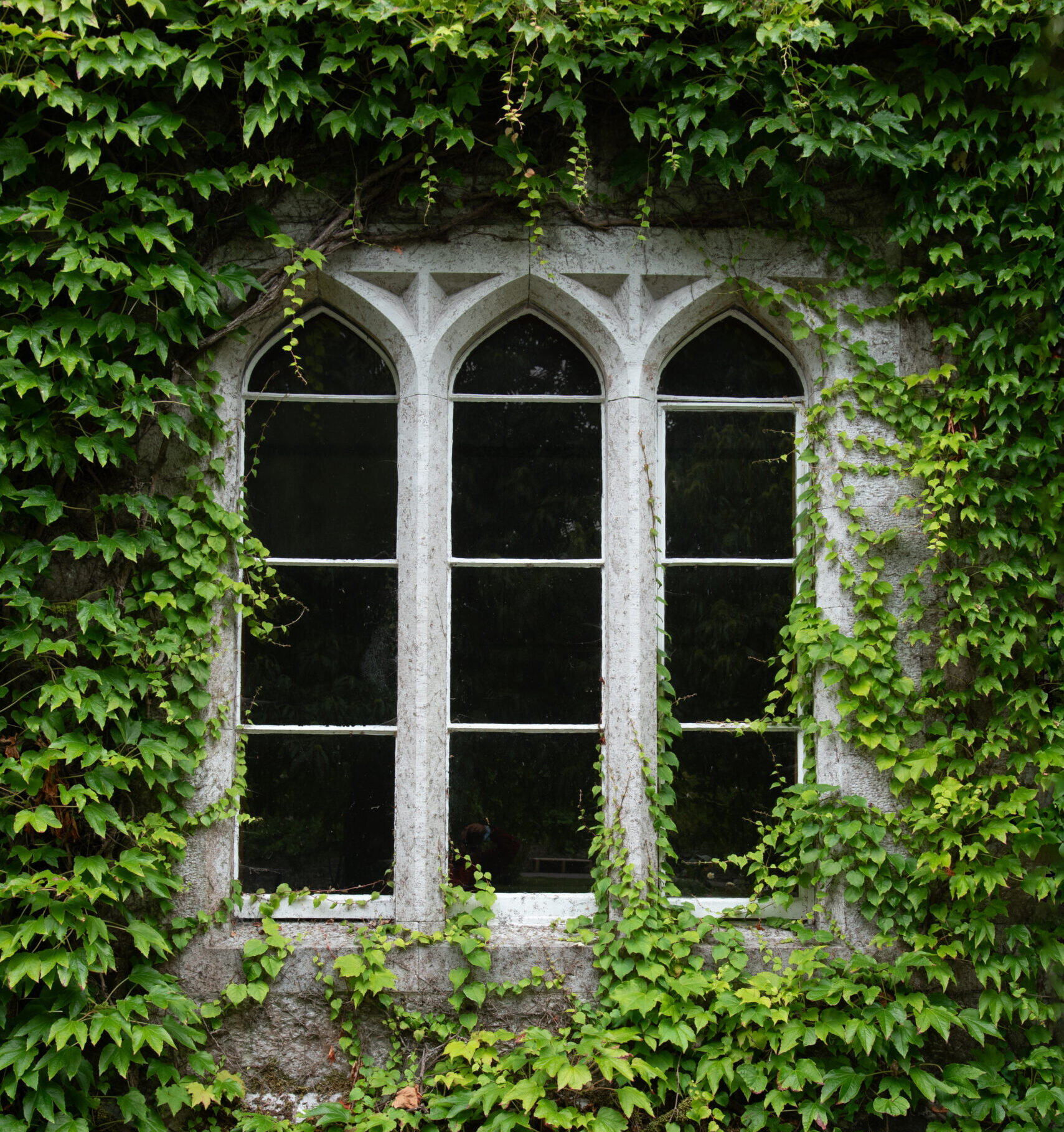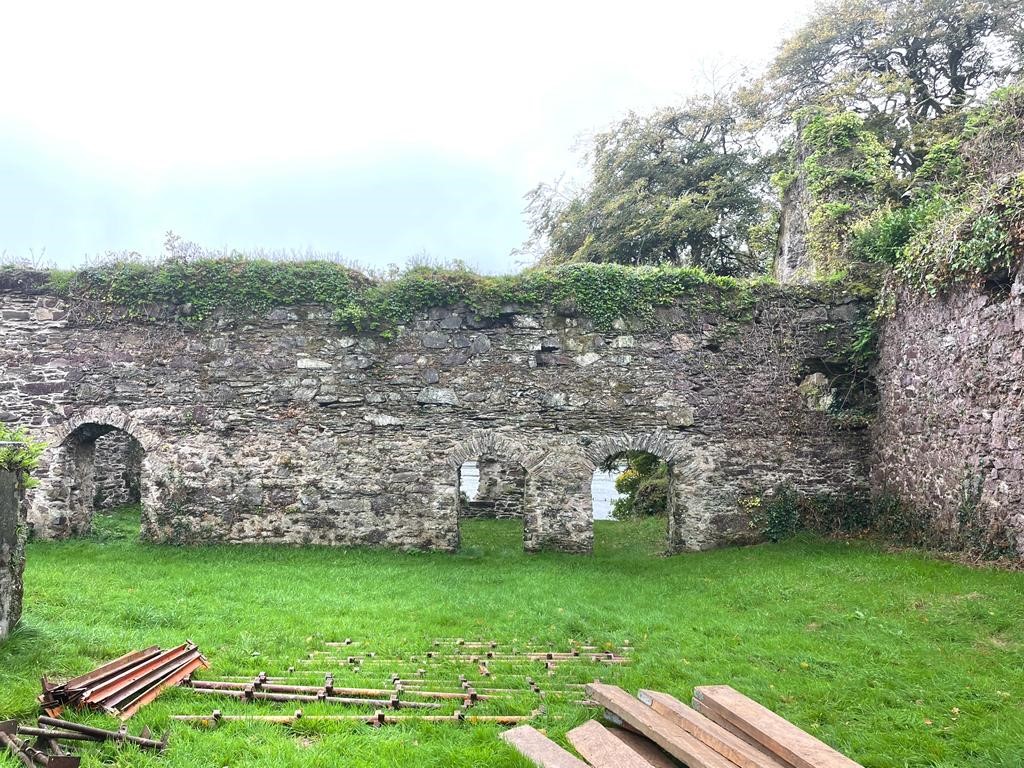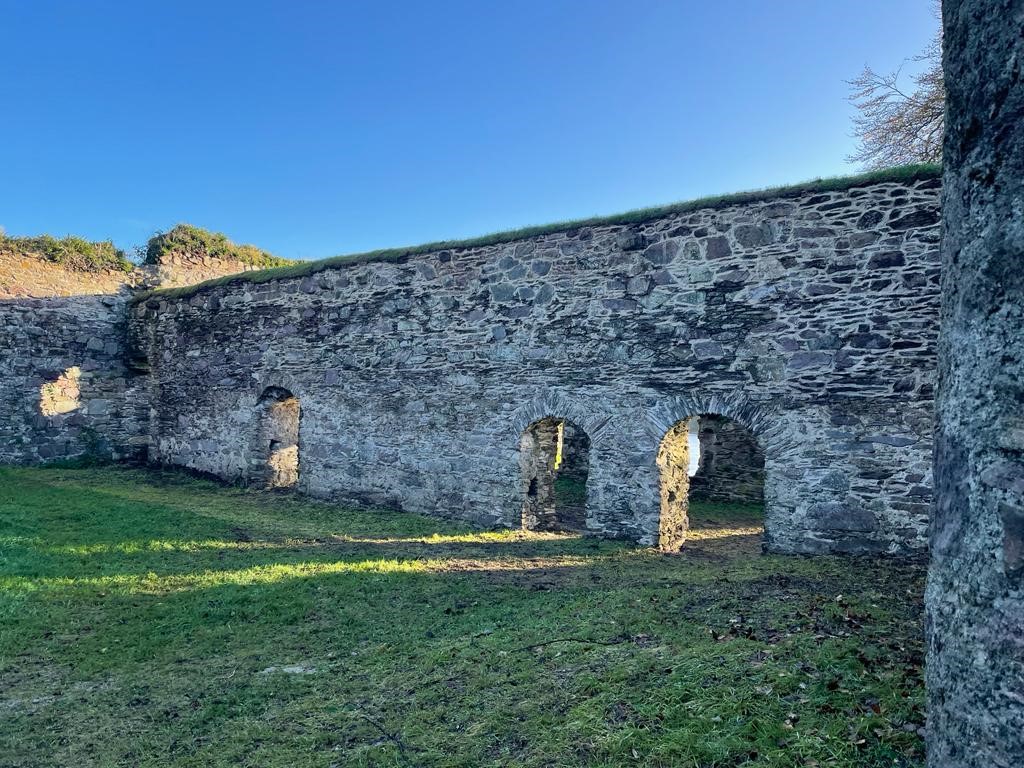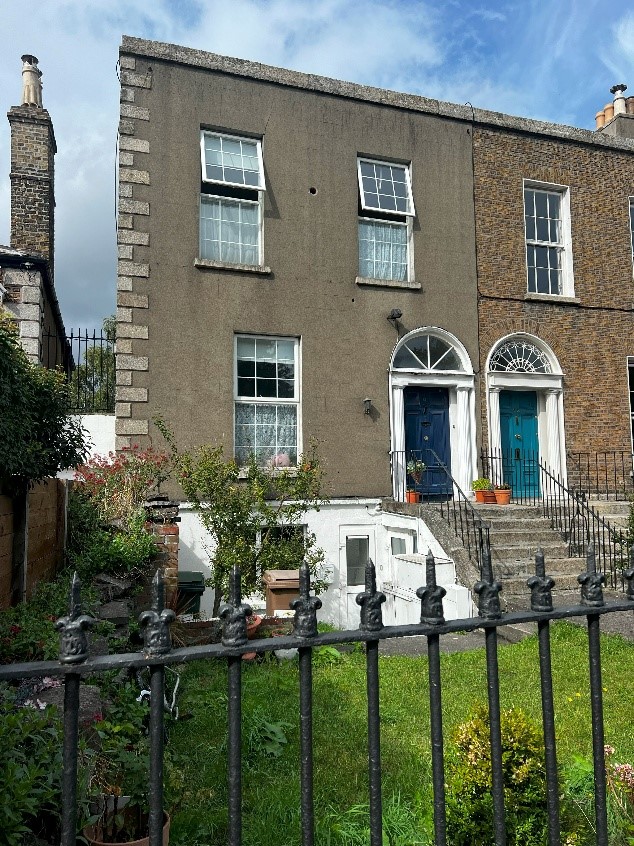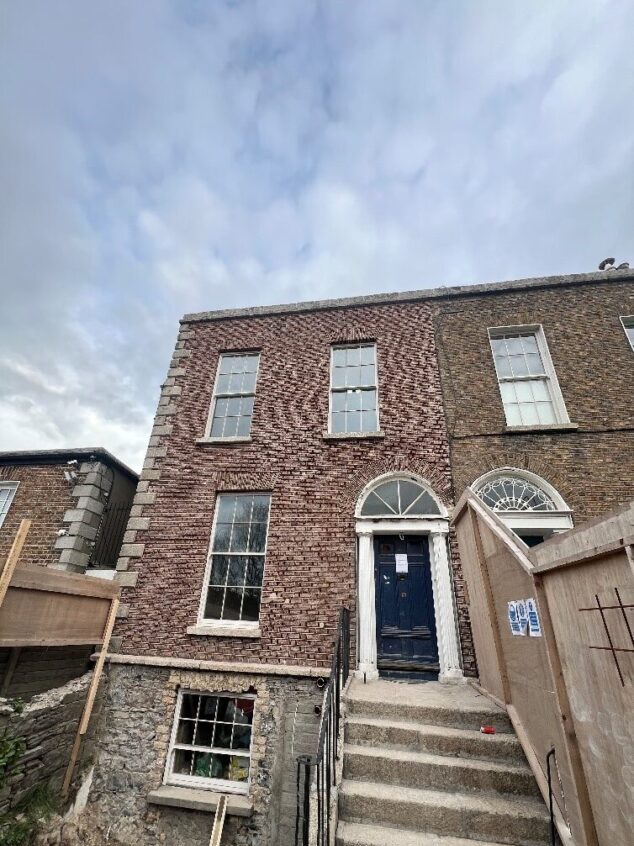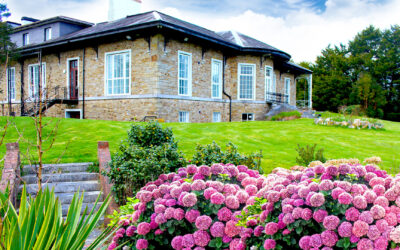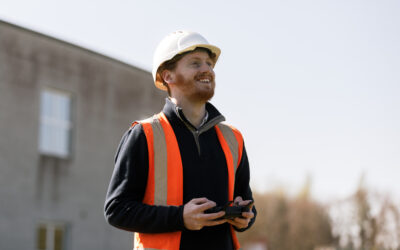Ireland’s built heritage stands as a testament to generations of skilled craftspeople and time-honoured techniques.
Today, that legacy is protected and preserved by a dedicated group of craftspeople – specialists in trades like stonemasonry, traditional brickwork, sash window repair, roof restoration, and more who are keeping these essential skills alive across the country.
The Heritage Register recognises those whose work goes far beyond basic repair and who understand the fabric of old buildings – the character of hand-cut stone, the balance of a timber sash window, the craft behind a limepointed brick wall, or the detail in a slate roof laid with care.
They respect traditional materials and methods, working not just to fix what’s damaged, but to protect the history, character, and structure of our built heritage.
In this feature, we highlight some of the craftspeople on the Heritage Register, exploring their journey into traditional crafts, the unique challenges they face, and the lasting impact of their work on our built heritage.
The Register of Heritage Contractors is an accredited listing of competent main contractors and specialist contractors in the field of built heritage conservation.
Each member of the register meets a set of predefined criteria, experience and expertise that enable them to carry out restoration projects.
For further information contact Gillian Ross on +353 (1) 406 6059, email [email protected] or check out www.heritageregistration.ie for more.
- Molana Abbey, Co. Waterford before restoration
- Molana Abbey, Co. Waterford after restoration by G Stone
Standing at a crossroads between innovation and cultural heritage
Greg Glynn is a stonemason with Limerick-based G Stone Masons
In an era marked by rapid technological advancements and a constant pursuit of innovation, the construction industry stands at a crossroads where the past and the future intersect.
On one hand, there’s a growing emphasis on modern construction techniques, materials, and designs driven by efficiency and sustainability. On the other, there’s a profound appreciation for preserving and celebrating cultural heritage, architectural traditions, and historical significance.
Striking the delicate balance between tradition and innovation has become an imperative in modern construction. From the very beginning, I’ve always had a natural approach to laying stone in the traditional style. My real passion for heritage stone masonry began when I started working on bridge rehabilitation projects using lime mortar.
That experience sparked a deep interest in historic buildings and structures – particularly in understanding how they were originally constructed and how they’ve managed to endure the elements for centuries. This appreciation laid the foundation for the company’s focus on preserving and restoring traditional masonry.
Future of the industry
What’s your advice to young professionals looking to enter your field?
Stay in school and get a good education first!
G Stone Masons was established in 2015 and is based in Co. Limerick. We specialise in the construction and repair of stone walling and bridges, as well as the restoration and conservation of historic stonework.
With a strong focus on traditional craftsmanship and quality, we’re dedicated to preserving the integrity and beauty of heritage structures. We have worked on a wide variety of heritage projects, including traditional cottages, stone walling, graveyards, and individual graves.
Graves tend to be the most unique – each one is a one-off, personally crafted to honour the individual laid to rest there. Many feature incredibly distinctive architectural details and exceptional craftsmanship, which make them truly special and meaningful to preserve.
Interestingly, our training has come primarily through hands-on experience.
We learn on the job every day, continually refining and perfecting our craft. While we may not have formal qualifications, we’ve built a strong reputation for delivering high quality work. We’re committed to following all relevant guidelines and specifications for each project, and over the years, we’ve gained extensive knowledge and expertise through consistent practice and dedication to traditional methods.
Molana Abbey in Co. Waterford was probably one of the most challenging projects we’ve worked on, mainly due to its sheer size. The work itself was fairly straightforward, but the volume of it made things much more demanding. On top of that, we were working to a tight deadline, which added extra pressure. Despite the challenges, we completed it on time and we were proud of the result.
Preserving historic structures is about leaving a lasting mark that will stand the test of time and outlive all of us. There’s a real sense of pride in knowing that the work we do today will still be standing 200 years from now. It’s a way of contributing to history and honouring the craftsmanship of those who came before us.
Ensuring new stonework blends seamlessly with original structures really depends on the type of structure you’re working with. Matching original stonework can be quite challenging, especially due to the natural ageing and carbonation that occurs over time.
While we can match the style and size of the stones and replicate the original laying techniques, the fresh stone and mortar can stand out initially. However, with time and exposure to the elements, the new work naturally weathers and blends in with the original, creating a seamless finish.
Yes, we regularly use traditional tools such as pointing bars, chisels, and pitching hammers, especially bevelled chisels, which are a key part of our day-to-day work. These tools are essential for achieving the precision and finish required for heritage conservation. When properly maintained, they last a long time and make it much easier to deliver work to the high standards that heritage projects demand.
We typically source stone locally, especially for conservation work, as the original materials were often taken from nearby areas. In many cases, we’re able to recover stone from the site itself – sometimes even from the ground below, where pieces may have fallen from the original structure over time.
While we occasionally need to import stone, we always aim to match it as closely as possible and keep it local to the project, just as it would have been when the structure was first built.
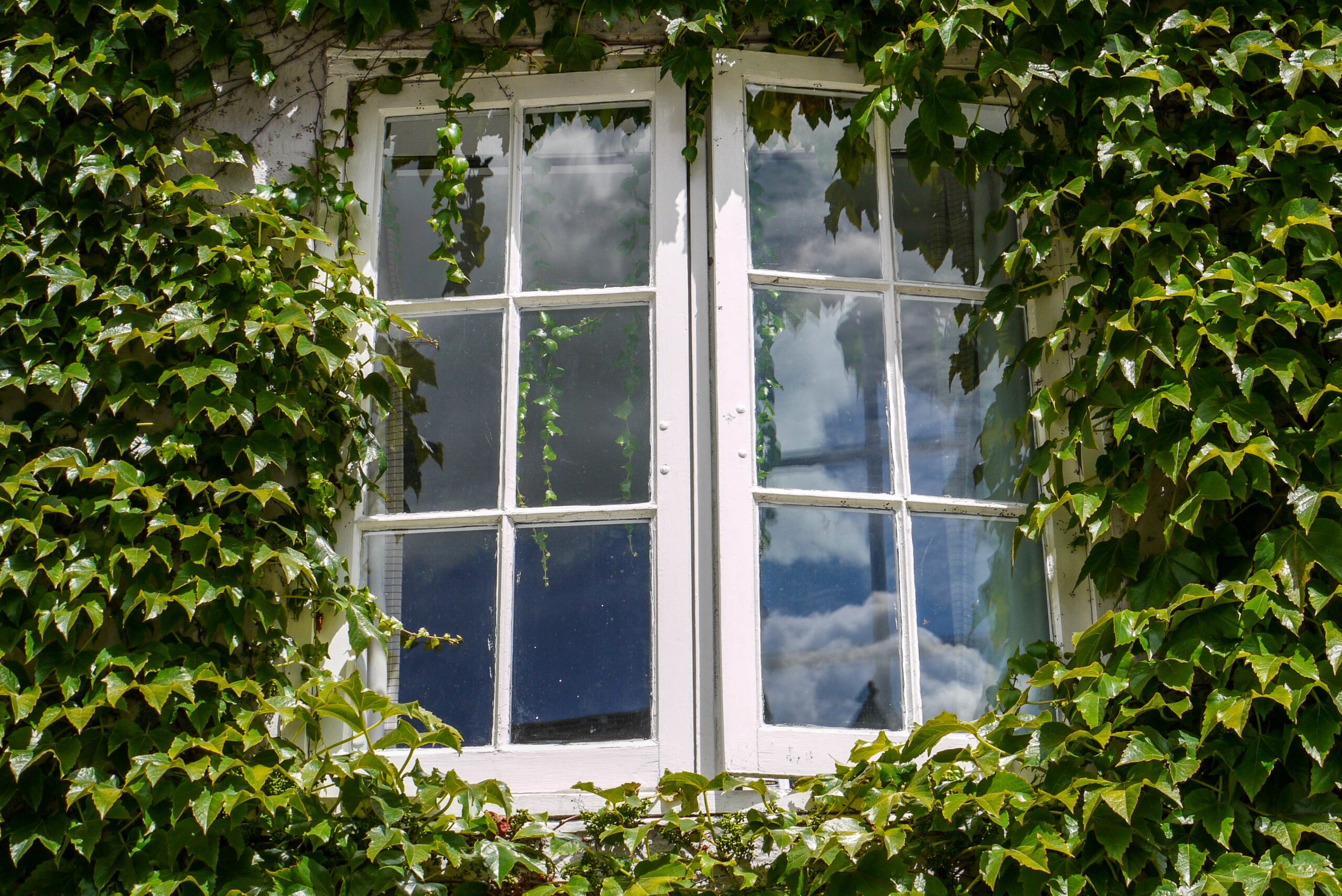
Merging traditional craftsmanship with modern needs
Barry Callaghan is managing director of Co. Meath-based joinery business Timeless Sash Windows. In operation since 1973, in the 90s founder Gerry Callaghan saw a niche in the market for specialisation in timber windows, both new and heritage restoration. Based in Trim, the business has become a source for innovative timber designs within the traditional building market. The company remains a family business under the guidance of the next generation, Barry and Pearse Callaghan.
We recently completed the restoration of all the windows in Westport House in Co. Mayo. This project was particularly interesting in that the windows were all made of oak, which is quite rare.
We also found an original timber pulley in the weight box of one of the windows, which is now on display at the property. Westport House itself is an iconic and meaningful building in Irish history, so it has been a delight to work on it. Another project is Aldborough House in Dublin.
This iconic building has been especially important to conserve as a dramatic feature on the Dublin landscape. The windows were in a very poor state of repair and are especially large and dramatic. Achieving the great refurbishment result showcases the skill of the craftspeople, both past and present.
Sustainability is integral to our work, as we aim to preserve heritage windows while minimising environmental impact. Refurbishing old windows is completely aligned with the circular economy model of repair and re-use. Additionally, we have invested in ensuring that our joinery is carbon neutral, with solar panels, a biomass plant, and all other electricity sourced from renewables.
We have aligned our company with the four most relevant UN Sustainable Development Goals and are continuously reviewing our carbon footprint. We improve energy efficiency in our products by using techniques like doubleglazing if original glass is not present, and draught sealing as standard.
Educating clients about the benefits of retaining existing windows compared to replacement helps to further promote sustainable practices. We work on both privately owned and commercial properties across the island of Ireland and also in the UK. These can be anything from homes to hotels, schools, public buildings and more.
The biggest challenge in restoration is the integration of the new and the old. We pay a great deal of attention to repairing the finest of details in the windows, to match the mouldings and repair like-for-like.
Also, we can no longer get the same quality of slow-grown timber, so choosing the correct timber for splice repairs is an important consideration. When windows have suffered extensive water damage, there is always the challenge of salvaging as much of the original fabric which requires meticulous stripping and splice repair.
Identifying and dealing with rot, lead paint, and structural integrity issues can be complex. We follow best conservation practice of doing as little as possible and as much as necessary.
An important element of this balance is to inform all the stakeholders on how to improve thermal efficiency through measures such as secondary glazing and getting shutters operational.
We can also improve modern performance by adding discreet draught proofing in carefully selected positions for maximum thermal impact. If there is no historic glass present, we can offer a variety of modern energy-efficient glazing. We have developed a system to strengthen glazing bars as fine as 16mm to allow them to hold slim double-glazed units.
Attention to detail ensures that any modern upgrades do not detract from the historical integrity of the windows. When it comes to the qualifications or expertise required to restore or replicate traditional sash windows, primarily, it is vital to have carpentry and joinery skills to work on traditional sash windows.
Furthermore, an understanding of historic architecture and its value, together with specialised training in historic conservation are required. We work with our suppliers to source the most appropriate timber, authentic ironmongery, different styles of heritage glass, and we manufacture cutters to exactly match historic mouldings.
We also have a system to collect reclaimed timber and we conserve and re-use the original glass when it is intact. This ensures that the original window is reinstated without any visible alteration of the original fabric.
Preserving heritage architecture is central to our mission. It represents a connection to the past, reflecting our cultural identity and history. For our company, it is not just about restoring windows; it’s about safeguarding the stories and craftsmanship that define our communities.
We believe that by preserving these structures, we contribute to the cultural and aesthetic landscape for future generations. We are excited to launch our innovative new secondary glazing that will allow customers to maintain fully functional shutters as well as keep their original sash window fully intact.
This is a development that will be welcomed as a unique conservation solution. Additionally, we follow the latest improvements in high performance glazing options that enhance energy efficiency without compromising historical aesthetics, where non-historic glass is present.
These innovations allow us to maintain the character of traditional windows while addressing modern performance needs.
- Before plaster removal and restoration of brick
- After plaster removal and restoration of brick by PMAC
Protecting structures for the next generation
Peter MacNamara is managing director with PMAC Ltd, a Dublin-based heritage façade cleaning company established in 1999 and a certified Heritage Contractor since 2004
We’ve worked on some of the most prestigious and historically important properties, churches, castles, and monuments throughout Ireland. From restoring floors in Dublin’s St Patrick’s Cathedral to removing graffiti from the Hellfire club we are a trusted partner of councils, contractors and committees who share our passion for maintaining and restoring our historical structures.
We specialise in cleaning, restoration, and conservation of all types of stone and brick and our expertise is recognised all over Ireland. The biggest challenge with any work related to an historic building is the level of care and expertise required to complete the project without any damage to the existing surfaces.
We’ve invested heavily in technology throughout our history and can support clients with a range of specialist machinery like the DOFF and Torc systems.
We take a sympathetic approach to all projects and focus on applying the gentlest process in the removal of contamination. Another challenge we find is instances where heritage brick or stone has been damaged, sometimes beyond repair from previous cleaning utilising high PSI power washers.
We recommend always using a certified heritage contractor for cleaning works to avoid this happening and to ensure best heritage practices are adhered to at all times. We have a vast knowledge and have invested heavily in specialist machinery designed specifically for cleaning delicate and sensitive surfaces.
Our team at PMAC consists of the best-trained specialists in the country, including colleagues with over 30 years of experience. We are always confident that we are choosing the right method to complete a project.
Our go-to technique is low pressure heated steam, which is excellent for removing organic contamination from old buildings. If the situation requires, we’ll consider using the DOFF system to remove paint or other stubborn contamination and in the case of carbon removal we have our Torc machines.
Our specialists also have a wide range of knowledge on products and detergents that support the cleaning process and we’re proud of our network of specialist suppliers who offer great support with new innovations.
We are always looking to complete our projects in the most non-invasive way. Our specialist machinery offers a fantastic solution for cleaning without the need of chemicals.
We look for eco-friendly alternatives whenever a chemical is required, and our staff are passionate about protecting the environment. In most instances we are cleaning buildings on a periodic basis and can manage the growth of weeds during the cleaning process.
There are some specialist options that allow operatives to target a specific plant without contaminating the whole area which we use. High temperature low pressure steam is effective at eliminating spores and delaying regrowth. Ultimately, weeds will continue to grow, so it’s all down to how you maintain it.
An enjoyable and difficult project that we are proud of was cleaning the façade of the Gresham Hotel on Dublin’s O’Connell Street. The project presented many challenges from working with 100 plus year old Portland Stone, to the hotel remaining live throughout project.
The building was heavily contaminated from decades of exposure to carbon, so we needed to choose a solution that provided the results needed without damaging the delicate stone.
We partnered with Thomann Hanry from the UK and used the Façade Gommage system which projects a fine soft powder across the masonry and removes layers of dirt and contamination to reveal the original appearance of the stone.
The system uses no water or chemicals, and a vacuum system recovers the dust generated in the process. The project was completed without closing the footpath and with minimal disruption to the hotel guests. The result was to return the stone façade to its original appearance when the hotel was re-built in the 1920s.
We also integrate modern technologies into our work. We travelled to France during the restoration of Notre Dame to see laser cleaning first hand. It’s a good system and is a good solution for cleaning on that scale, but we feel it is not economically viable in the Irish market.
The DOFF, Torc and other machinery we have offer excellent solutions and are well recognised by heritage architects. We tell the owners of historic buildings that it’s so important to deal with any issues immediately and have a preventive maintenance programme in place.
Small issues can lead to devastating problems with water ingress or structural issues, so it’s best to maintain the property in the short term to avoid long term pain. Graffiti is a problem, and our advice would be to have it removed as soon as possible to deter others but always work with reputable contractors to ensure the graffiti is removed without any further damage to your property.
We are very happy to support in the preservation of our historical buildings. We live in a beautiful city with so many iconic historical buildings and take great pride that our skills and passion have contributed to protecting and maintaining these structures for future generations.

